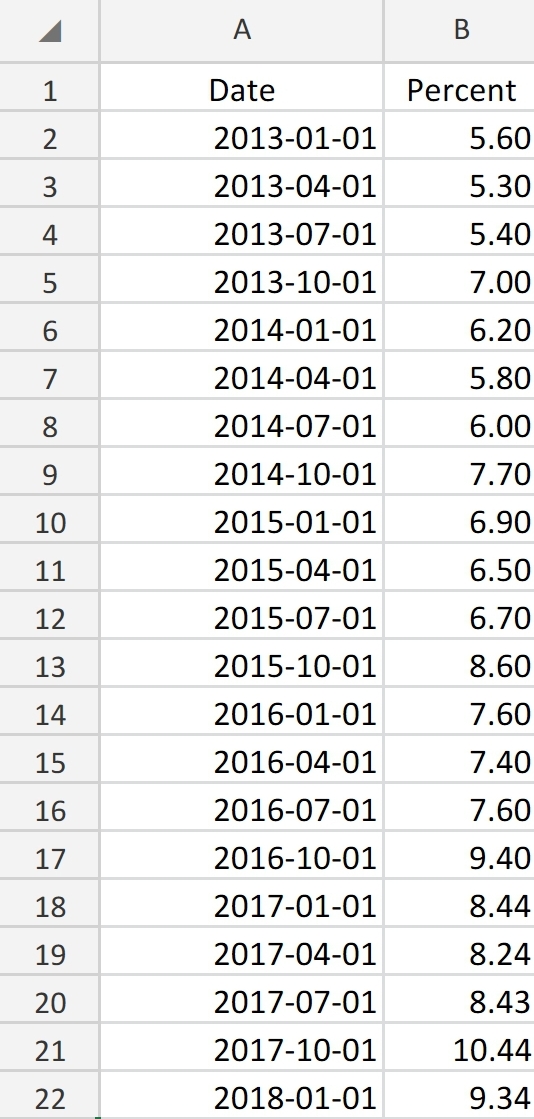Question
1. The series begin with the first quarter of 2013 and end with the first quarter of 2018. Show the time plot series that display
1. The series begin with the first quarter of 2013 and end with the first quarter of 2018. Show the time plot series that display quarterly e-commerce retail sales as a percent of total U.S. retail sales.
Show your plot in the space provided:
2. Calculate the moving averages for each observation in the data based on periods 1, 2, 3, and 4. Show the time plot of quarterly e-commerce retail sales along with the moving-average forecasts based on a span of k=4. Make sure to include the labels of x and y axes and adjust the values on the plot to show the possible changes more clearly over the time.
Show your plot in the space provided below:
3. Use the figure from question #2 to interpret the seasonal regularity to the time series data (e-commerce retail sales). For instance, in which quarters do you observe percent sales are the lowest or the highest, or in which quarters do you observe a rise or a decline? Compare and contrast the component that you observe in the time series and the moving averages.
4. Calculate the centered moving average (CMA) and show the time plot of quarterly e-commerce retail sales along with the centered moving-average forecasts based on a span of k=4. Make sure to include the labels of x and y axes and adjust the values on the plot to show the possible changes more clearly over the time. In the space provided below, show your plot, and compare and interpret the trend of two series.
5. Calculate the seasonal ratio of quarterly e-commerce retail sales and average these ratios by quarter.
Show the resulting ratios based on the periods of 1, 2, 3 and 4 in the table below:
Quarter Seasonality ratio
1
2
3
4
6. Regress the de-seasonality component of quarterly e-commerce retail sales on time component. In the space provided below, show your regression output and the regression equation using trend-and-season predictive model from the simple linear regression output.
7. Create a plot using de-seasonality component of quarterly e-commerce retail sales along with a linear trend fit and interpret the graph. In the space provided below, show your plot and label x and y axes, and adjust the values on the plot.
8. Compute a forecast for the series of third quarter on the time plot of quarterly e-commerce retail sales. Note that the series end on the first quarter with t=21. Make sure to include the seasonality ratio for the appropriate quarter corresponding to the value of t.

Step by Step Solution
There are 3 Steps involved in it
Step: 1

Get Instant Access to Expert-Tailored Solutions
See step-by-step solutions with expert insights and AI powered tools for academic success
Step: 2

Step: 3

Ace Your Homework with AI
Get the answers you need in no time with our AI-driven, step-by-step assistance
Get Started


